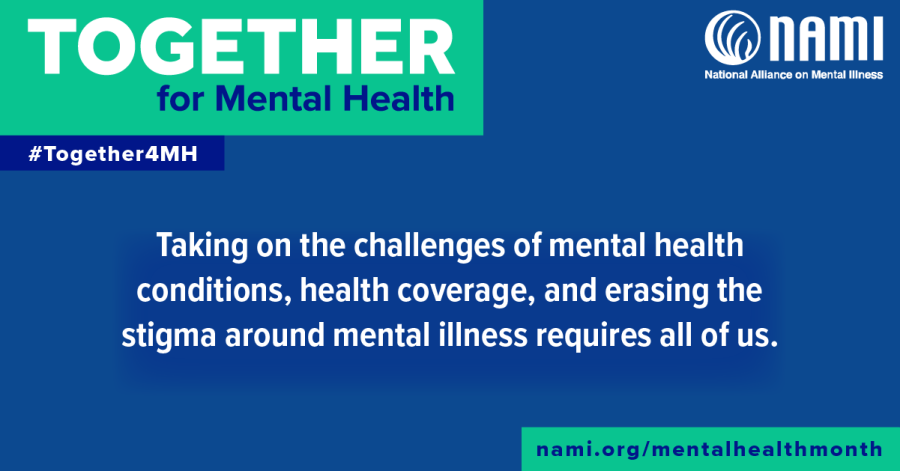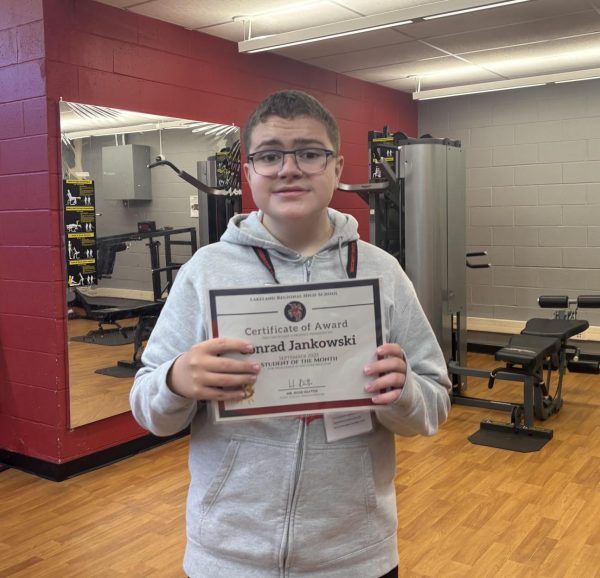Together for Mental Health Awareness Month: Breaking Suicide Stigma
Together in Mental Health is this year’s Mental Health Awareness Month theme. Facing a mental health illness, like suicide, is something society must do as a team to break the stigma.
As the month of May winds down, so does Mental Health Awareness Month. A month provided and dedicated to paying attention to the mentality of others and finding help for those who need it. Mental Health is an important part of a person as it can play a role in the decisions made by a person.
Mental Health Awareness Month highlights all aspects of mental health and awareness, including suicide. According to CDC, there is a death due to suicide every 11 minutes. Suicide is a leading cause of death in America, and is usually due to an unstable mindset. Although suicidal thoughts and tendancies are an international batter, there are many ways to help prevent a loved one dealing with these that many people may not be aware of:
Be Aware of the Signs and Symptoms:
-
Depression – Depression plays a big role in mental health, and it’s unfortunately a very common illness in today’s society. Depression can come in many shapes and forms, these include being sad, being moody, lacking in motivation, sometimes even having a substance abuse issue.
-
Sudden happiness – Although this sounds wrong, it’s been shown that a burst of energy can be a sign of suicidal tendencies. A person who does not usually have this personality trait or has been dealing with depression prior to this burst can be extremely happy or calm before taking their life.
-
Changes in physical appearance or sleep patterns – Sometimes drastic changes can be a sign of suicidal tendacies. A drastic loss or gain of weight is one sign someone is struggling. Additionally, no longer caring what one looks like or personal hygiene can be another. On top of this, sleeping too much or too little can be a sign that someone needs help.
-
Recent trauma – Traumatic events can be a reason a person may turn to this decision. If a person finds a traumatic event too much to handle they may turn to suicide instead of seeking help.
-
Giving away valuable belongings – Some people may give away things they wouldn’t even think of letting others touch in a stable state of mind. For example, if a friend starts to give away their prized collectables, clothing items, or electronics, you should question why. Along with this, even making preparations by expressing their love to friends and family in an exaggerated or out-of-the-blue manner can be a sign of suicidal thoughts.
-
Threatening or joking about suicide – As normalized as it is, suicidal jokes is alwayssomething to take seriously. It may be a joke but sometimes there’s a deeper meaning behind these jokes. Also, if someone threatens suicide, a call for help is needed.
Any or all of these signs and symptoms mentioned should be taken seriously when found in others or yourself. Unfortunately, these signs have been normalized over the years or turned into jokes, and aren’t always taken very seriously. Because of this, it can cause losses of people we love.
There’s a few things you can do to save someone from suicide and even get help yourself. One would be to tell an adult or someone you trust. Another would be to call the National Suicide Prevention Lifeline, a 24-hour service placed to help those in need (800-273-8255). As for depression, therapy is available for those in need and medication can be provided.
Here at Lakeland Regional High School, help is provided. Our teachers, counselors, and administrators are available to talk when we need them, and can help point someone to the help they need.
Whether you or a loved one is battling a mental illness, know that you’re loved and cared for here, and that there is someone here to help you.

Sirriah is a freshman at LRHS. This is her first year writing for The Lancer Ledger. She enjoys writing and is very excited to participate. She hopes you...












